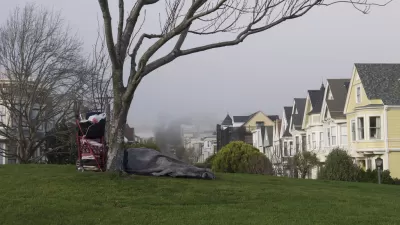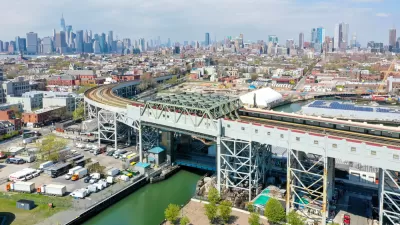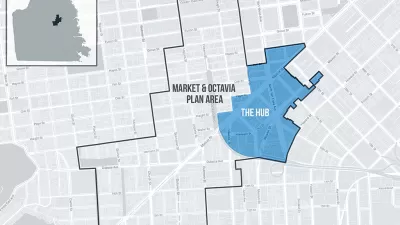In San Francisco, the relatively affluent are vocal in their denunciation of the "gentrifying" effects of the more affluent. This debate clouds the city's fundamental problems in housing its poor and working class residents, says Ilan Greenberg.

In San Francisco, "the debate [over gentrification] is dominated by fierce new champions of the anti-gentrification cause who aren't concerned so much about the truly poor being forced from—or tempted out of—their neighborhoods," writes Greenberg. "In their view, the victims of gentrification are also affluent, just less so than the people moving in."
“Middle-class people being bought out by upper-income people—that may be a political issue, but it’s not what we would call gentrification,” says Robert J. Sampson, an urban sociologist at Harvard University. “The affluent moving in—that’s an urban battle, but not gentrification.”
But for Dawn Phillips, co-director of programs for Causa Justa, a neighborhood organization responding to resident displacement in Oakland, and other advocates for the disadvantaged, these debates among the relatively affluent obscure the city's more significant problems.
"In Phillips’s world, the urgent issue isn’t whether the Bay Area’s new wealth has the same perspective and experience as the old. Nor is Phillips losing sleep over where in the city middle-class people are supposed to live," notes Greenberg. "Rather, for Phillips, the gentrification problem concerns government policies that for decades disinvested in neighborhoods, only to turn around and encourage real-estate investment when richer neighbors moved close. This, Phillips argues, systematically pushed vulnerable, disadvantaged people to the geographic margins, where there is little work, community resources, or personal networks."
FULL STORY: I Left My Home in San Francisco: The rise of the white, middle-class anti-gentrifiers

Planetizen Federal Action Tracker
A weekly monitor of how Trump’s orders and actions are impacting planners and planning in America.

Congressman Proposes Bill to Rename DC Metro “Trump Train”
The Make Autorail Great Again Act would withhold federal funding to the system until the Washington Metropolitan Area Transit Authority (WMATA), rebrands as the Washington Metropolitan Authority for Greater Access (WMAGA).

The Simple Legislative Tool Transforming Vacant Downtowns
In California, Michigan and Georgia, an easy win is bringing dollars — and delight — back to city centers.

The States Losing Rural Delivery Rooms at an Alarming Pace
In some states, as few as 9% of rural hospitals still deliver babies. As a result, rising pre-term births, no adequate pre-term care and "harrowing" close calls are a growing reality.

The Small South Asian Republic Going all in on EVs
Thanks to one simple policy change less than five years ago, 65% of new cars in this Himalayan country are now electric.

DC Backpedals on Bike Lane Protection, Swaps Barriers for Paint
Citing aesthetic concerns, the city is removing the concrete barriers and flexposts that once separated Arizona Avenue cyclists from motor vehicles.
Urban Design for Planners 1: Software Tools
This six-course series explores essential urban design concepts using open source software and equips planners with the tools they need to participate fully in the urban design process.
Planning for Universal Design
Learn the tools for implementing Universal Design in planning regulations.
Smith Gee Studio
City of Charlotte
City of Camden Redevelopment Agency
City of Astoria
Transportation Research & Education Center (TREC) at Portland State University
US High Speed Rail Association
City of Camden Redevelopment Agency
Municipality of Princeton (NJ)





























